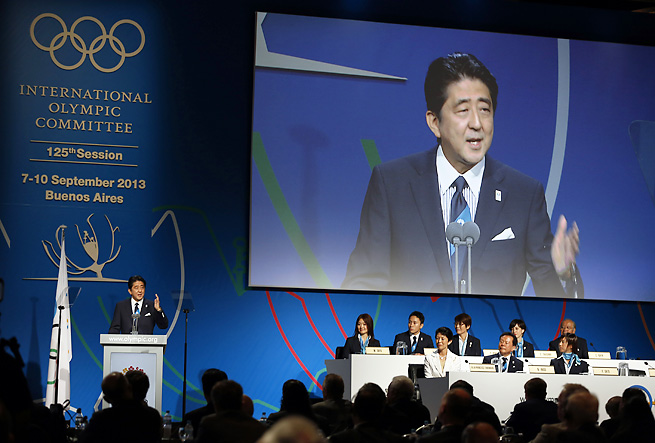Published in The Financial Times 30/9/2013
While Japan is basking in the glow of Tokyo’s successful Olympic bid, Prime Minister Shinzo Abe is preparing to make his first policy error.
Soon he must decide whether to proceed with the previous administration’s plan to double the consumption tax in two stages . If he goes ahead, as seems likely, he will deal a heavy blow to household purchasing power.
The hike has been approved by a panel of experts and praised as courageous by foreign and domestic opinion-leaders. It is nonetheless wrong.
Instead of listening to economists working in the financial markets, Team Abe should listen to the markets themselves . In the five years leading to the Lehman Brothers shock, Japan’s 10 year bond yield averaged 1.57%. In the five subsequent years, the average fell to 1.08%. This year, uniquely in the world, the downtrend has continued and the yield has now slid below 0.7%.
In other words demand for bonds has been overwhelming supply since well before the coming of Abenomics. Yields will shift higher only when confidence is strong enough to draw substantial amounts of capital into risk assets and real economic activity.
Japan is a country with a structural excess of savings and net overseas financial assets equivalent to over 50% of GDP. The “Abegeddon” scenario of a bond market collapse unrelated to a better use of capital is just that, a scenario that belongs in a disaster movie.
The government has three strategies for cushioning the hit to demand. The first is public works spending. The 2020 Tokyo Olympics will provide a justification for all kind of prestige projects and infrastructure upgrades , but a sizeable public spending package has already been deployed this year. Another will be required next year just to avoid a contraction.
The second is encouraging private investment by targeted cuts in corporation tax. Leaving aside the difficult politics of shifting the tax burden from companies to households, it is not clear that companies need to expand capacity – or whether it would be a good idea, given Japan’s comparatively high level of capex and low return on assets.
The third is increasing the Bank of Japan’s monetary stimulus, thus keeping the currency weak and the markets for risk assets strong.
Mr. Abe will deploy all three approaches, but the greatest emphasis is likely to be on the third.
If the stock of assets – specifically equities and real estate – rises in value over the coming year, then a temporary dip in the GDP flow measure can be easily weathered.

On the other hand, if there is a significant and sustained setback in the asset markets, the viability of the entire Abenomics project would be put into question.
That would be disastrous for the man who lent it his name; disastrous for the Liberal Democratic Party, which has united behind him; disastrous for Japan’s national strategy and status in the region and the world.
The Japanese establishment is betting the farm on Abenomics. There is no Plan B.
The man charged with ensuring the bet works is the new governor of the Bank of Japan, Haruhiko Kuroda. In his first week in office, he delivered a shock and awe programme of quantitative easing that aims to double the Japanese monetary base in two years.
Is that enough? Nobody knows. Like Federal Reserve Chairman Bernanke in 2009, Mr. Kuroda has embarked on a long, arduous journey with no econometric sat-nav to guide him. But if the programme falls short, his response, like Ben Bernanke’s, will be to do more. The only way to gauge if the measures are working is by the market action – in stocks, the yen and what the bond market reveals about inflationary expectations.
Fortunately he is facing no constraints. The BoJ can ramp up its quantitative easing programme any time it chooses. It can deliver an even more potent message by massively increasing its so far minimal purchase of Topix ETFs and real estate investment trusts.
For the last twenty years, investors have become accustomed to “the Greenspan put” and the “Bernanke put” which have underwritten the US stock market in times of stress.
Soon we will have the Japanese equivalent, the Kuroda put. As the aim is to end a multi-decade bear market in risk assets, rather than revive a multi-decade bull market, the rationale is stronger.
If Mr. Kuroda plays his cards with skill and prescience, the result would be transformative. The Japanese stock market would no longer be one to sell into rallies. but one to buy on dips.
